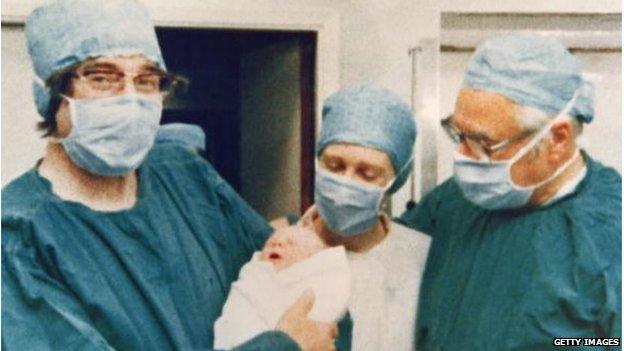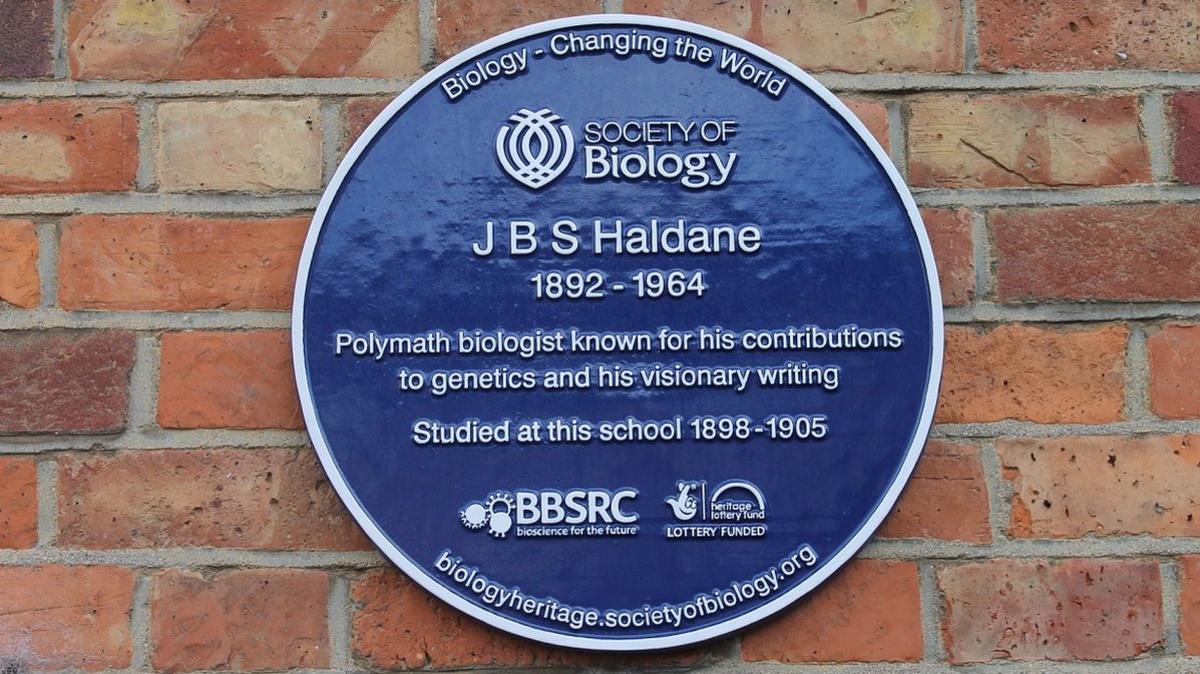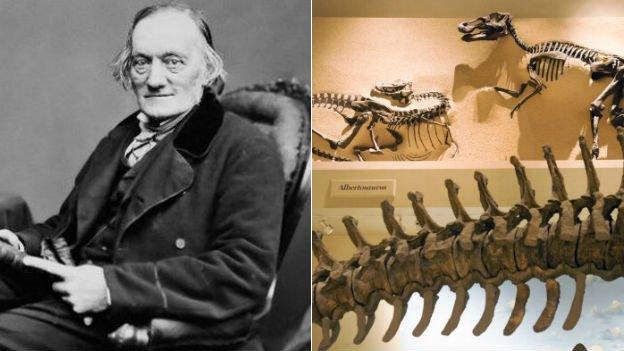Blue plaque honours IVF pioneers in Oldham
- Published

Louise Brown (pictured) was born in 1978
A blue plaque has been unveiled celebrating the research which led to the world's first test-tube baby.
It was placed on the site in Greater Manchester where Patrick Steptoe, Sir Robert Edwards and Jean Purdy developed in vitro fertilisation (IVF).
The Society of Biology installed the plaque as part of a new series of 10 plaques around the UK.
It was unveiled at Dr Kershaw's Hospice in Oldham, the former lab site.

Birth of IVF

The team that produced the first test-tube baby at the birth of Louise Brown
Steptoe, Edwards and Purdy worked together in the 1960s with gynaecologist Steptoe harvesting the eggs of female volunteers
Reproductive biologist Edwards and his assistant Purdy developed a technique for fertilising eggs in the laboratory
By retrieving eggs at the right time and fertilising them in the laboratory they believed they could implant them in the uterus
They began transferring fertilised eggs to the womb in 1971, but it took more than 80 embryo transfers before Lesley Brown gave birth to Louise Brown on 25 July 1978
Source: The Society of Biology

Steptoe, Edwards and Purdy established a research laboratory on the site in 1971 and developed a technique which led to the births of millions of children worldwide.
A statement from the world's first test-tube baby, Louise Brown, now 36, read: "It was here Jean Purdy first saw cells divide through a microscope - the beginning of my life."
- Published14 March 2015

- Published26 February 2015

- Published10 April 2013

- Published20 June 2012
.jpg)